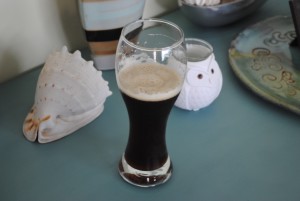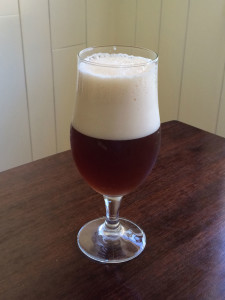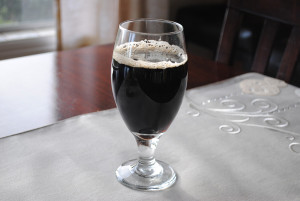 I believe my first foray into rapid lagering was a success as far as producing a very drinkable beer in two weeks. Very debatable that this is a Czech pils however. Beer is as dry as a bone so its actually tasting more like a German Pils. Reviewing my notes on the brew day I see “mash dropped to 137F so slowly ramped up to 167 to mash out.” Oops. I think I wasn’t paying attention to the mash. My tun isn’t insulated and if I start doing things and get distracted and let it slip below 148F, which by the way, I thought was a bit low to begin with in BeerSmith, I have to fire up the tun again to keep it steady. Next project – insulating that puppy.
I believe my first foray into rapid lagering was a success as far as producing a very drinkable beer in two weeks. Very debatable that this is a Czech pils however. Beer is as dry as a bone so its actually tasting more like a German Pils. Reviewing my notes on the brew day I see “mash dropped to 137F so slowly ramped up to 167 to mash out.” Oops. I think I wasn’t paying attention to the mash. My tun isn’t insulated and if I start doing things and get distracted and let it slip below 148F, which by the way, I thought was a bit low to begin with in BeerSmith, I have to fire up the tun again to keep it steady. Next project – insulating that puppy.
So let’s break this method down and see what I observed.
- Cooled wort to 55 and pitched 2 packs of Saflager S-23 directly into wort.
- Let rise to 57 and held for 5 days.
- 4 hours after pitch detectable smoke on surface. Next morning fermentation going with nice krausen.
- End of day 5 noticeable slowing of fermentation and moved fermentor into house and slowly rose to 66F over 1 day and held around 66-67F for 3 days.
- End of day 8 very noticeable clearing.
- Day 9 took gravity reading 1.011 – 3 points off but thought good since OG a tad high anyhow.
- Put back in fridge and crashed to 30F.
- Day 10 added 3/4 tsp. gelatin.
- Day 11 racked to keg and turned up psi to 15 while beer at 28F.
- Day 12 pulled 1/2 pint to check clarity – still a little murky and pulling dregs off bottom of keg and dialed back psi to 11 and rose fridge temp to 39F.
- Day 13 pulled 1/2 pint with a bit of floaters and then pulled full pint(pictured) – nice and clear.
Just a hint of acetaldehyde but that could be the yeast and maybe would lager out. Not too sure but it almost had that Mexican lager smell like Tecate or Modelo Especial. Very firm bitterness but not much hop aroma or flavor left from the Saaz additions – a dry hopping would have done wonders to this I think. Definitely not malty enough but a nice dry German pils instead. Nothing stellar but a very drinkable beer.
In conclusion I’m a believer in this quick lagering method. I think if I use a recipe designed by me with my equipment in mind instead of a NB 5 gallon premade kit (really who gets five gallons out of these!) and really keep on eye on that mash temperature, I will have my Czech pils in two weeks.



